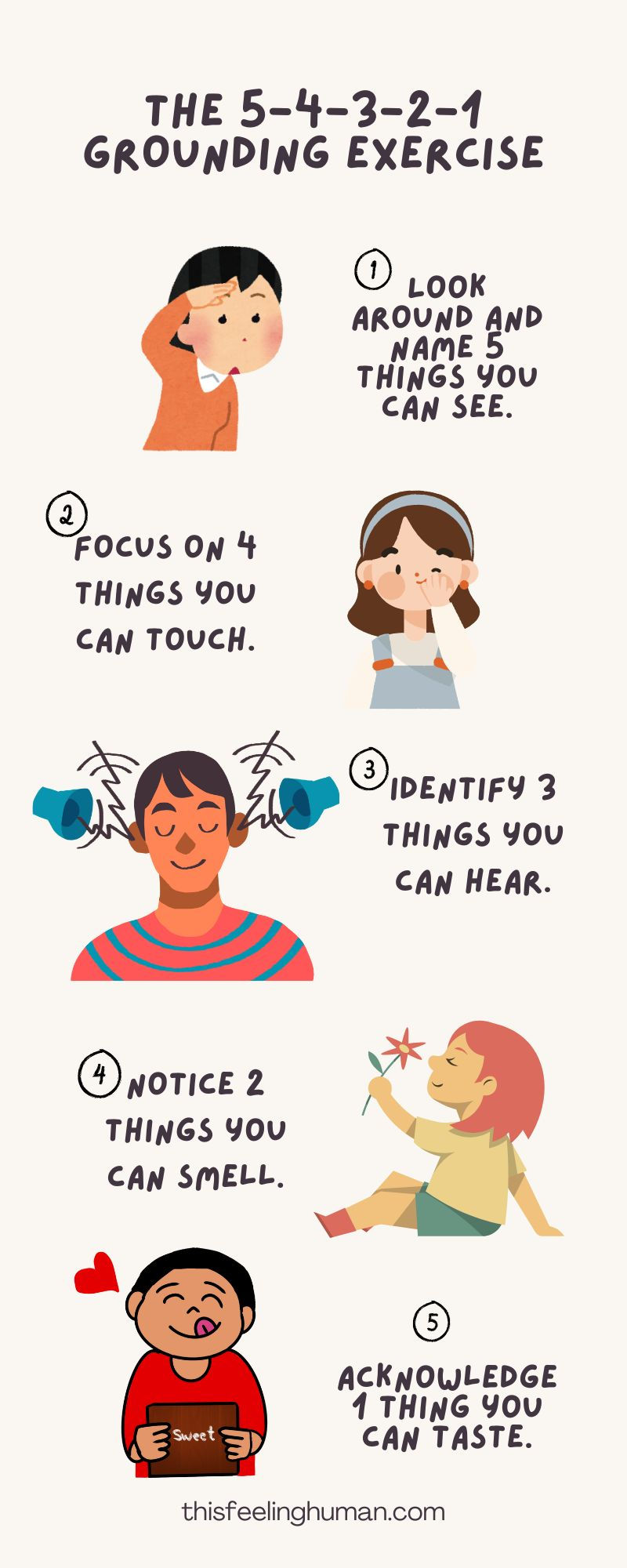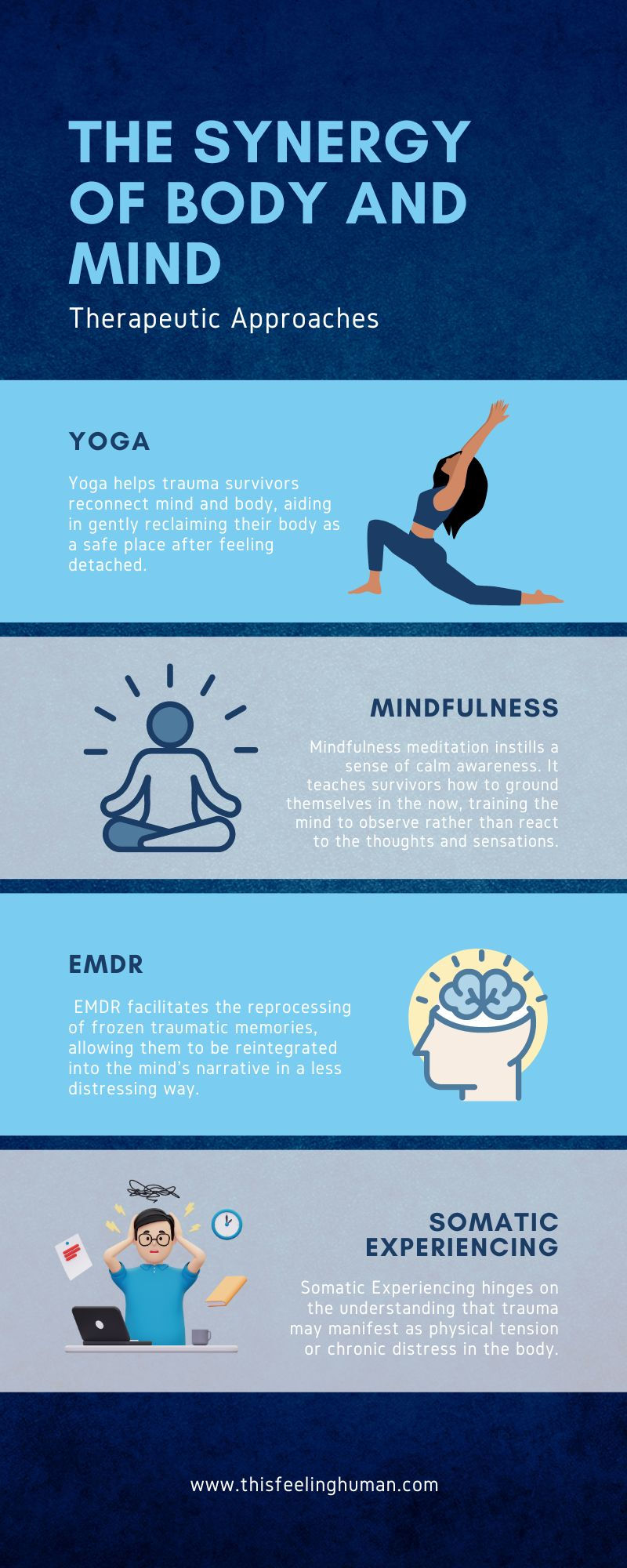Embracing Our Inner World | A Simple Grounding Exercise
- TFH

- May 17, 2024
- 4 min read
Updated: Aug 7, 2024
The path through body-centered therapies leads us to a crucial part of healing: creating a feeling of safety and presence within our bodies. A simple yet powerful grounding exercise can be an initial step in this direction, and it can be practiced anywhere and at any time when you feel overwhelmed or disconnected.
The 5-4-3-2-1 Grounding Exercise
This exercise involves grounding yourself in the present by engaging in all five senses. Here’s how you can practice it:

Look around and name 5 things you can see. It could be a tree swaying outside your window, a book on your desk, or simple patterns on the fabric of your couch.
Focus on 4 things you can touch. Feel the texture of your clothing, the smooth surface of a table, or the warmth of a cup of tea in your hands.
Identify 3 things you can hear. Maybe it's the distant sound of traffic, the hum of your refrigerator, or birds chirping outside.
Notice 2 things you can smell. If you’re inside, perhaps the scent of a candle or the aroma of cooking. If you can’t easily smell anything, envision two of your favorite smells.
Acknowledge 1 thing you can taste. Take a sip of water, a piece of fruit, or simply the aftertaste of your last meal.
This exercise pulls you back into the present moment, reinforcing the safety of your immediate environment and the refuge found within your body. It's a powerful technique to ground yourself, fostering a sense of calm and stability.
The Art of Noticing: Embracing Our Inner World
How often do we sit together like this, not to fix or find solutions, but simply to notice? There's something beautifully honest about acknowledging what's stirring inside us, isn't there?
Imagine we're in that cozy little nook of a coffee shop we adore, steam rising from our mugs and the world outside a distant murmur. Let's wrap ourselves in the warmth of understanding and explore what it means to notice our emotions—to truly observe them without an agenda.
A Cup of Kindness for Our Feelings
We often ignore our feelings, treating them like unwelcome visitors knocking at the door of our consciousness. Amid our busy lives, we tend to disregard emotions such as sadness, anxiety, or even overwhelming joy. However, it's important to remember that every emotion is a friend. Just like any friend, they seek acknowledgment and understanding.
When we begin to pay attention to our feelings, we're doing something powerful. We're practicing emotional regulation. This term might sound like something out of a psychologist's handbook, but it's just a fancy way of saying that we're learning to understand and manage our emotions — like knowing how to soothe a baby or calm a stormy pet.
Noticing, Not Judging
But here's the thing—we're not trying to change how we feel. No, we're just noticing, observing without judgment. Have you ever seen leaves fluttering on a tree? You see them dance in the wind, and you don't try to change their rhythm; you just watch. We're talking about that here—watching our emotions with the same gentle curiosity.

The Quiet Strength in Awareness
Our emotional experiences are not just automatic reactions; they can be influenced by our ability to create space between our feelings and our responses. By giving ourselves this breathing room—essentially allowing ourselves to witness our feelings without immediately reacting—we create a buffer that helps us manage our emotions more effectively. For instance, taking a moment to acknowledge and accept our feelings, without rushing to change or suppress them, can prevent us from being overwhelmed by them.
Understanding the concept of creating space between emotions and reactions provides valuable insights into building emotional resilience. By recognizing that we have the power to observe our emotions without letting them control us, we can find steadiness and balance even amid life's uncertainties. This approach helps us maintain a sense of control and reduces the feeling of being on an uncontrollable emotional roller coaster.
To support this process, we offer Emotion-Based Coaching, which utilizes Emoli Cards to help individuals explore the narratives behind their feelings, along with Calm3D for mood regulation and life coaching sessions. By integrating these resources, clients can learn to give themselves space to witness their emotions, ultimately finding greater stability and resilience in their emotional lives. Explore our bundled promotion here to learn more.
The Gift of Inner Compassion
Remember, being aware of our emotions isn't about self-criticism; it's quite the opposite. When we observe our emotions, we're giving ourselves a hug from the inside. This act of internal kindness sends a ripple of peace through our being. It's okay to not be okay, and it's equally okay to be content, joyful, or excited. All of it is part of the wondrous tapestry of being human.
Walking Alongside You
We are here with you on this journey. We stumble, fall, and pick ourselves back up again. Together, we're learning that by paying attention to our inner world, we're doing something incredibly brave. We're opening the door to a more mindful, compassionate life, not just for ourselves but for everyone we meet.
If you feel something stirring inside, take a moment. Sit down with it, offer it a cup of tea, and just notice. Be a compassionate observer of your own heart. Remember, each feeling is a messenger, bringing wisdom from the depths of who you are.
Together, in this safe space, with every shared sigh and smile, we learn a bit more about what it means to listen—to ourselves and each other.

Comments